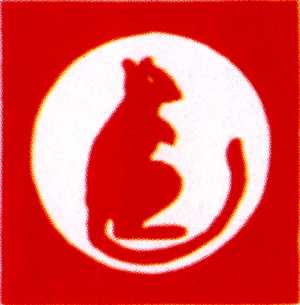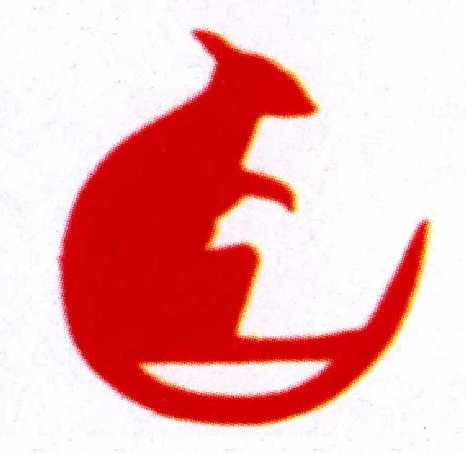

Equipment Used By The 7th Armoured Division
During its history the 7th Armoured Division used many different types of weapons and vehicles within the Brigades and Regiments that served with the Division. I have tried to include as many as possible with as much information as possible, but I apologise is I have omitted any.
Armoured Regiments
The one piece of equipment that changed the most during the war must be the Tank and Armoured Car. The detailed information on each type of vehicle is on two separate pages as the amount of information is too much for just one.
Tanks:
The range of tanks that served with the division is quite large, starting with the
Matilda II (Infantry Tank), the MK 6 Light Tank and then the A9, A10 and A13 Cruiser Tanks. The most power gun fitted to these tanks was the 2-pdr, which had little impact on the German Armour, but Later on when the Valentine and Crusader made their appearance, they were eventually armed with the 6-pdr. The British produced tanks were to be followed by the US supplied Stuart (37mm gun), Grant (37mm and 75mm guns) and Sherman (75mm gun). The latter was also modified by fitting a 17-pdr gun to become the Sherman Firefly.Towards the end of the war the British
Cromwell (75mm gun) and Challenger tanks (17-pdr gun), became the mainstay of the division, with a few Chaffee tanks (76mm gun) serving in the reconnaissance units. Finally the Division was supplied with the Comet tank after the end of the Second World War, but used them as part in the Berlin Victory Parade in July 1945.This section also includes information on the BESA Machine Gun which was the mainstay of British produced tanks and the 0.30" Browning Machine Gun which was supplied with US produced tanks.
Armoured Cars:
At the beginning of the war the 11th Hussars were equipped with the
Rolls Royce and Morris Armoured Cars, but the war progressed the Marmon-Harrington and Humber Scout Car and Armoured Car became available, along with the Daimler Scout Car and Armoured Car.From about 1944 onwards the
Staghound range of Armoured Cars was issued to the British Army, which saw them through to the end of the war, along with some of Daimler and Humber Cars. Anti-aircraft Armoured cars were deployed as early as October 1942, with the Humber Quad AA Car filling this role This later to be replaced by the Staghound Dual 0.5" AA Car.Although perhaps not as famous as the tank the development of the Armoured Car is an interesting story and this section also includes information on the Vickers K Gun which was fitted to many Scout and Armoured Cars.
Infantry Battalions
The British Infantry equipment changed considerable during the war, from a rifle based organisation with a few Light Machine Guns, with a Anti-tank Rifle, plus Heavy Machine Gun and Mortar support from Battalion, to a unit that had a considerable number of automatic weapons and a potent ant-tank capability.
The basic infantry weapon throughout the war was the
Lee-Enfield Rifle, with automatic fire being provided by the Bren LMG, or even the older Lewis Gun, plus sub-machine guns in the shape of the US Thompson and then the Sten guns. To provide local artillery support each platoon was also armed with a 2" Mortar.Heavier support was provided by the
Vickers Machine gun, the Browning 0.5 inch Machine Gun and 3" Mortar, detached from the main Battalion and later in the war 4.2" Mortars from the Independent MG Company.At the start of the war anti-tank support was provided by the
Boys A/T Rifle, but by the end of the war the P.I.A.T. (Projector Infantry Anti-Tank) was carried within each platoon enabling the infantryman to even take on the mighty Tiger tank.The humble infantryman, may have fought on foot, but the majority were carried by lorry or carrier between engagements. Later on armoured
Half-Tracks, such as the M3 or M5 were used to provide some protection to small arms fire and to give cross country capability in order to follow the tanks. Later the 'Kangaroo' Armoured Carrier, made from converted tanks was used to increase the protection of the infantry going into battle. The Half Track was used primarily by the infantry in Armoured Divisions, with the infantry also using the ubiquitous Bren Gun Carrier and the Flame Thrower equipped Wasp version
Artillery Regiments, (including Anti-Tank, Tank Destroyers and Anti-Aircraft)
At the start of the war the majority of artillery units were equipped with the
18 pdr Field Gun, of World War l vintage, but converted to towing by a tractor unit. The other Field gun in service, which then became the standard weapon of the Royal Horse Artillery and Field Artillery units, was the versatile 25 pdr Howitzer. This excellent piece of ordinance was even capable of anti tank fire. During the war a number of Tractor units were used, but by far the most widely used was the "Quad", plus a limber, for the Field Artillery, while the Morris CDSW 6X4 Tractor was used for the Light Anti-Aircraft guns.As the war progressed and became more mechanised, there was a clear a need for the artillery support to become mechanised too. This was achieved initially by the "Bishop" Self Propelled Gun (SPG) - equipped with a 25 pdr - and latter the
"Sexton" SPG (again equipped with a 25 pdr). Also some 105mm US manufactured "Priests" were deployed within the SP Artillery Regiments.At the start of the war the heaviest anti-tank weapon available was the
2 pdr Anti-Tank gun, which had little effect against some of the heavier German tanks. However, these were in short supply so the Bofors Model 1936 Anti-Tank gun was also used in North Africa in the early stages of the war, there. By 1941 this was being replaced by the better 6 pdr Anti-Tank gun, which saw service through to the end of the war. This was deployed within both the infantry Battalions and Anti-tank Regiments. Normally the Anti-Tank guns were towed by the normal lorries, but to make the guns more mobile they were carried "Portee" on the back of the vehicles, ready for action. This make them easier to move, but more susceptible to enemy fire. As the war progressed the lighter anti-tank guns were towed by Bren Gun and Loyd Carriers.Towards the end of the North African campaign and during the invasion of Europe the
17 pdr Anti-Tank gun was available any could knock out a Tiger tank at about a 1000 yards. This was the gun fitted to the Sherman Firefly and Challenger tanks and Achilles/Wolverine Tank Destroyers.Anti-Aircraft defences was provided mainly by the famous 40mm Bofors Gun, but for a while captured 20mm Breda AA/AT guns were also used and just before the end of the war M16 Quad 0.50" Browning Half-Tracks were in use
From 1944 German mortars we becoming a significant threat and so Counter Mortar Batteries were formed using sound detection equipment and Radar to help locate them ready for counter bombardment.
Engineers and Other units
In this section I hope to explain what equipment was used by the
Royal Engineer and Royal Electrical and Mechanical Engineer units attached to the Division, along with that used by Independent Machine Gun Companies which served. The former includes mine clearing and the famous Bailey Bridge. Additionally, the equipment used by the various Radio Operators and Royal Corps of Signals and main Ambulance of the Royal Army Medical Corps is also shown. This page also has information on the Armoured Command Vehicles used by the Armoured Brigades of the Division and the Divisional HQ, itself.
Back Tanks Page Armoured Cars Page Artillery Page Infantry Page Other Equipment Page